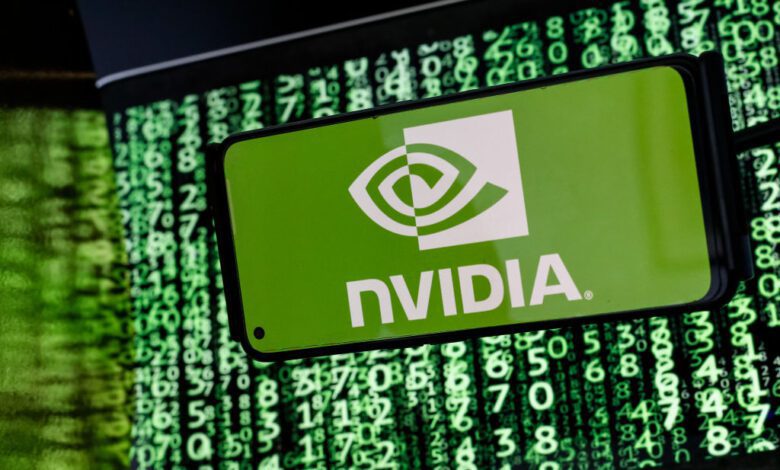
Investors in the behemoth SPDR technology sector fund might be surprised to learn that until last week their exposure to Nvidia was roughly four times that of Apple, despite their comparable market values.
That disparity was costly for shareholders of the $70 billion State Street fund because Apple stock has outperformed Nvidia by 10 percentage points in the third quarter. And, it forced S&P Dow Jones Indices to tear up its rulebook to account for the growing might of the biggest tech companies.
The valuations of Apple, Microsoft and Nvidia, the three largest U.S. companies by market value, have soared above $3 trillion this year. Together, the companies make up more than 60% of the market value of the S&P 500’s information-technology sector—and that conflicts with fund-concentration rules that limit the combined contribution of the biggest companies to 50%.
Time has shown that passive investing, or tracking indexes, typically offers the best return for investors, while also limiting their risk. But the discrepancy within the SPDR fund—one of the world’s biggest exchange-traded funds—shows that it doesn’t always work the way investors expect. The rise of a handful of big tech stocks has changed the market in ways that few investors would have predicted even a decade ago.
THE ETF REPORT: FOXBUSINESS.COM
“The original rules had operated fine and fair for basically the entire life of these funds,” said Matthew Bartolini, head of Americas research for State Street’s SPDR ETF business. “What really brought this to public lexicon was the rise of Nvidia. This is the first time you’ve ever had three stocks with a market cap over $3 trillion in the same sector.”
WILL US RETURN TO EASY MONEY ERA?
Under federal securities rules, no more than 25% of a fund’s assets can be invested in a single stock, and the sum of the weights of any companies that individually exceeded 5% of the fund’s assets can’t top 50%.
To comply with the 50% rule, S&P had traditionally capped the weight of the smallest constituent with a greater than 5% weight until an index was back below the concentration threshold.
In early June, for example, Microsoft and Apple each had a roughly 22% weight in the SPDR fund, which tracks S&P’s tech sector index. Even though the market caps of the three companies were similar, Nvidia had just a 6% weight so that the 50% barrier wouldn’t be triggered.
Things got especially wonky when it was time for the index’s scheduled June rebalance. Nvidia had just sneaked past Apple’s market cap at the time. As a result, Nvidia’s weight jumped to roughly 21%, and Apple’s was demoted to about 4.5%. Microsoft was the largest U.S. company at the time and had a roughly 21% weighting as well.
Index-tracking funds had to sell tens of billions of dollars in Apple shares and buy Nvidia stock in its place. In the case of the SPDR fund, that sum made up about 15% of its assets. Adding to the discord, Broadcom —the next biggest stock in the fund—had roughly the same weight as Apple, despite Apple dwarfing the chip maker’s market cap by about four times.
Many investors in popular tech index funds likely didn’t realize the discrepancies, said Zachary Evens, an analyst at Morningstar.
“I think many investors would be surprised to see the third stock in the index receive such a disproportionately low weight,” Evens said. “And the ones who knew about it were growing increasingly discontent.”
To address the issue, S&P changed its methodology to comply with the rules ahead of its Sept. 20 rebalance. The index provider lowered the weights of all three companies proportional to their market cap, until they collectively comprised less than 50% of the SPDR fund.
Had the rules not been changed, the fund would have once again done a massive swap between Nvidia and Apple shares because Apple is again the largest U.S. company, followed by Microsoft and then Nvidia.
The rise of other big companies such as Alphabet, Meta Platforms and Amazon.com didn’t create a problem for the SPDR fund because they aren’t categorized as tech companies by S&P. Those stocks are in the communication-services and consumer-discretionary groups.
Concentration issues are most prominent in sector indexes that offer investors focused exposure. The tech-heavy Nasdaq-100 Index did an unscheduled special rebalance in July 2023—its first since 2011—to ensure that its biggest companies didn’t exceed 50% of the benchmark when combined.
The thresholds are in place to allow investment vehicles such as mutual funds and ETFs to maintain their status as regulated investment companies that can pass profits through to shareholders instead of being taxed like a regular company.
Write to Jack Pitcher at jack.pitcher@wsj.com




